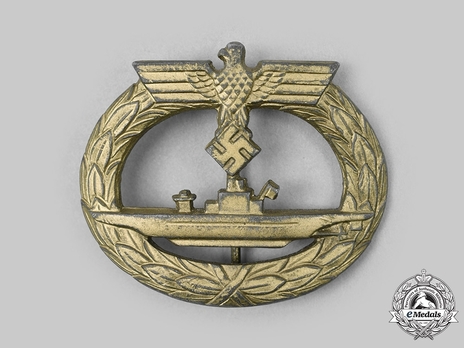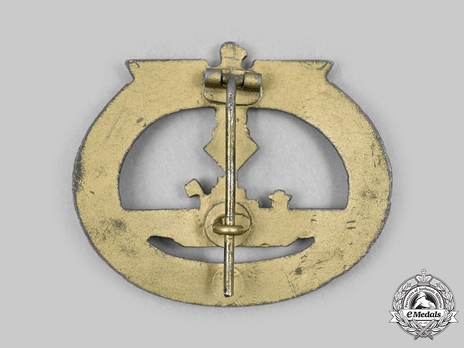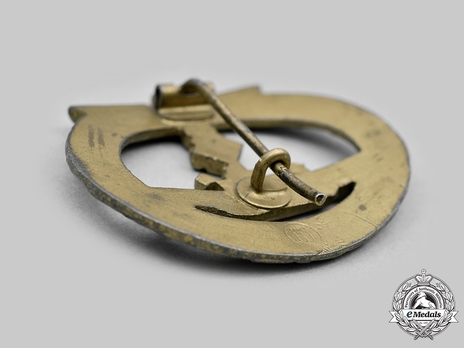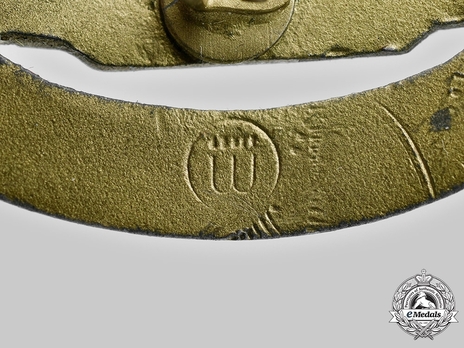Submarine War Badge, by E. F. Wiedmann
CATEGORY: Version
SKU: 01.GTR.0901.102.05.000
Estimated market value:




Estimated market value:
Constructed of gilded feinzink, presenting as an oval oak leaf wreath with a central U-Boat, topped by a Kriegsmarine-style German national eagle clutching a mobile swastika, reverse plain with a barrel hinge and vertical pinback meeting a flat wire catch, marked below catch by stylized "W" (for E. Ferd. Wiedmann, Frankfurt am Main), measuring 48.0 mm (w) x 40.66 mm (h) and weighing 18.6 grams, vaulted, scarce maker, in extremely fine condition.
The Submarine War Badge was originally instituted in January of 1918 and it was later revived by Adolf Hitler on October 13th, 1939. The Badge was conferred upon U-Boat crews who were exceptional at locating and destroying enemy vessels.
To receive the badge, an individual had to participate in at least two operational missions or had to participate in at least one successful sortie against the enemy. In addition, if an individual was wounded during a mission, they were also eligible to receive the badge. If a sailor was killed in the line of duty, his badge would be sent to his next-of-kin. The award could be conferred upon officers, non-commissioned officers, and enlisted men, as long as they fulfilled one of the criteria listed above. The awards were issued at the discretion of the U-boat's captain.
The first badges were manufactured by Schwerin & Sohn (Berlin) and were composed of tombac. The finishes vary and include real gold and artificial gold washes. Cloth badges were produced but rarely worn.
Badges by Wiedmann are often, but not always marked with the company’s logo, a stylized W inside a circle with the small letters EFERD above it, which are barely visible and appear only as five small dots. Badges are made of zinc.

Comments
Sign in to comment and reply.


Scroll Top